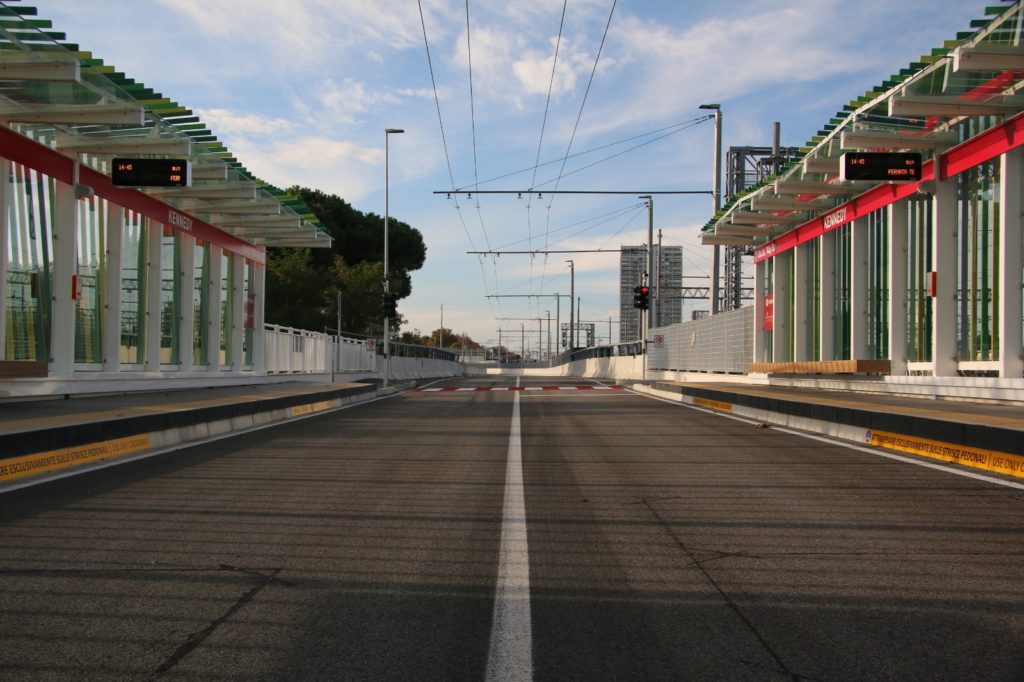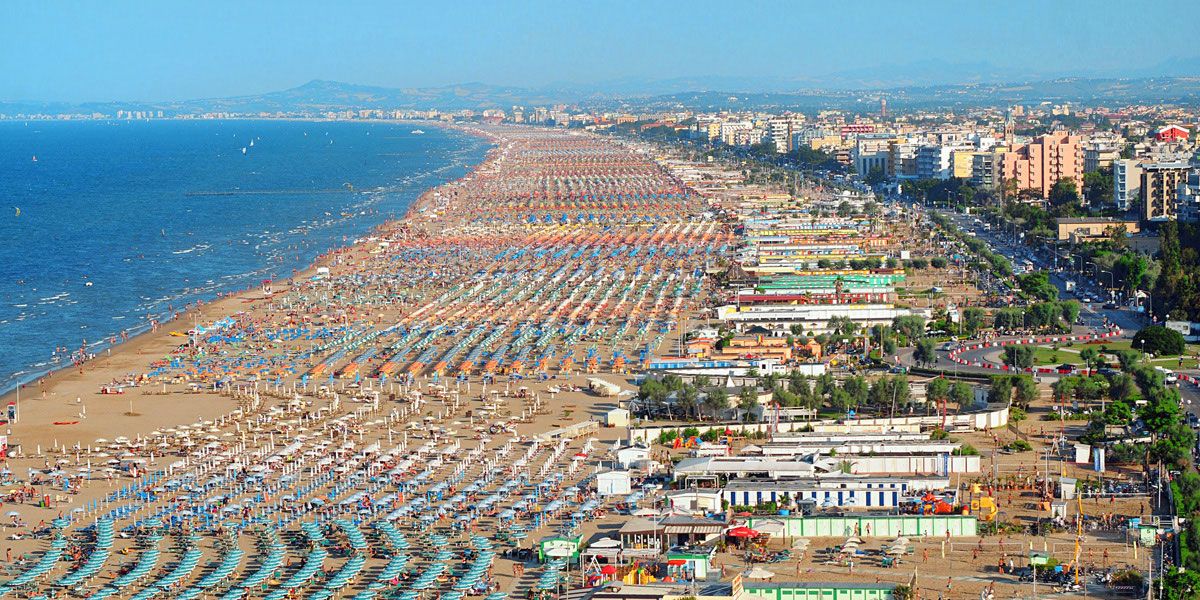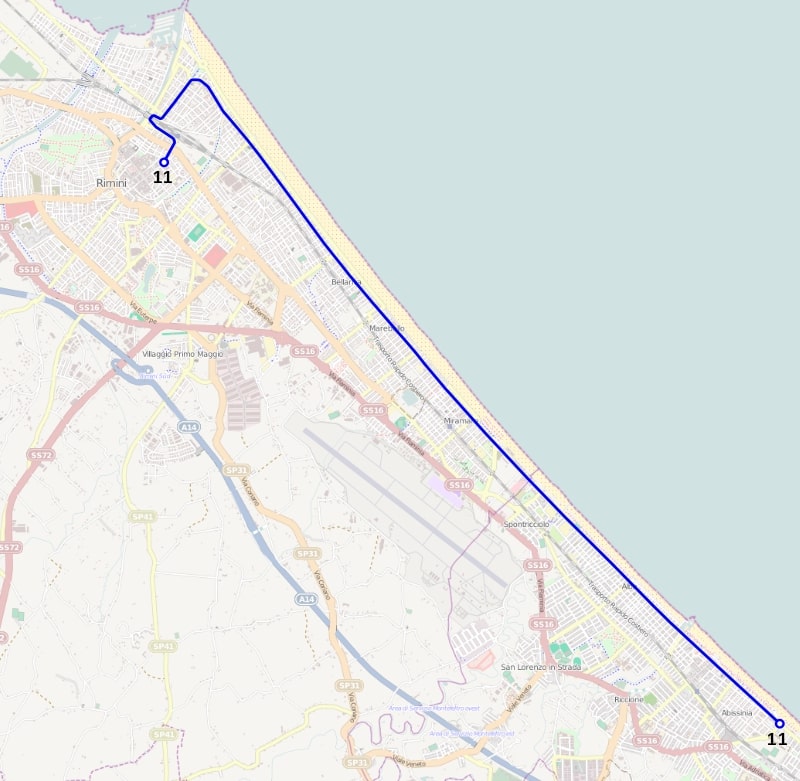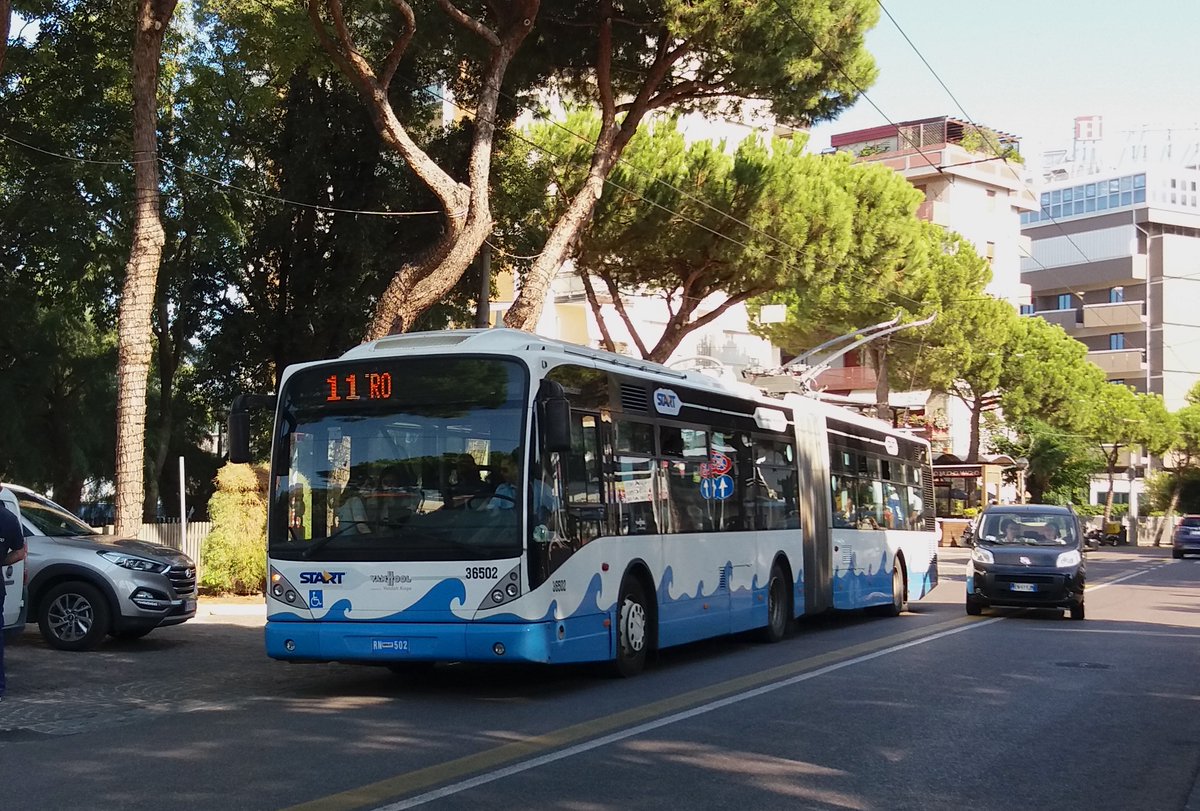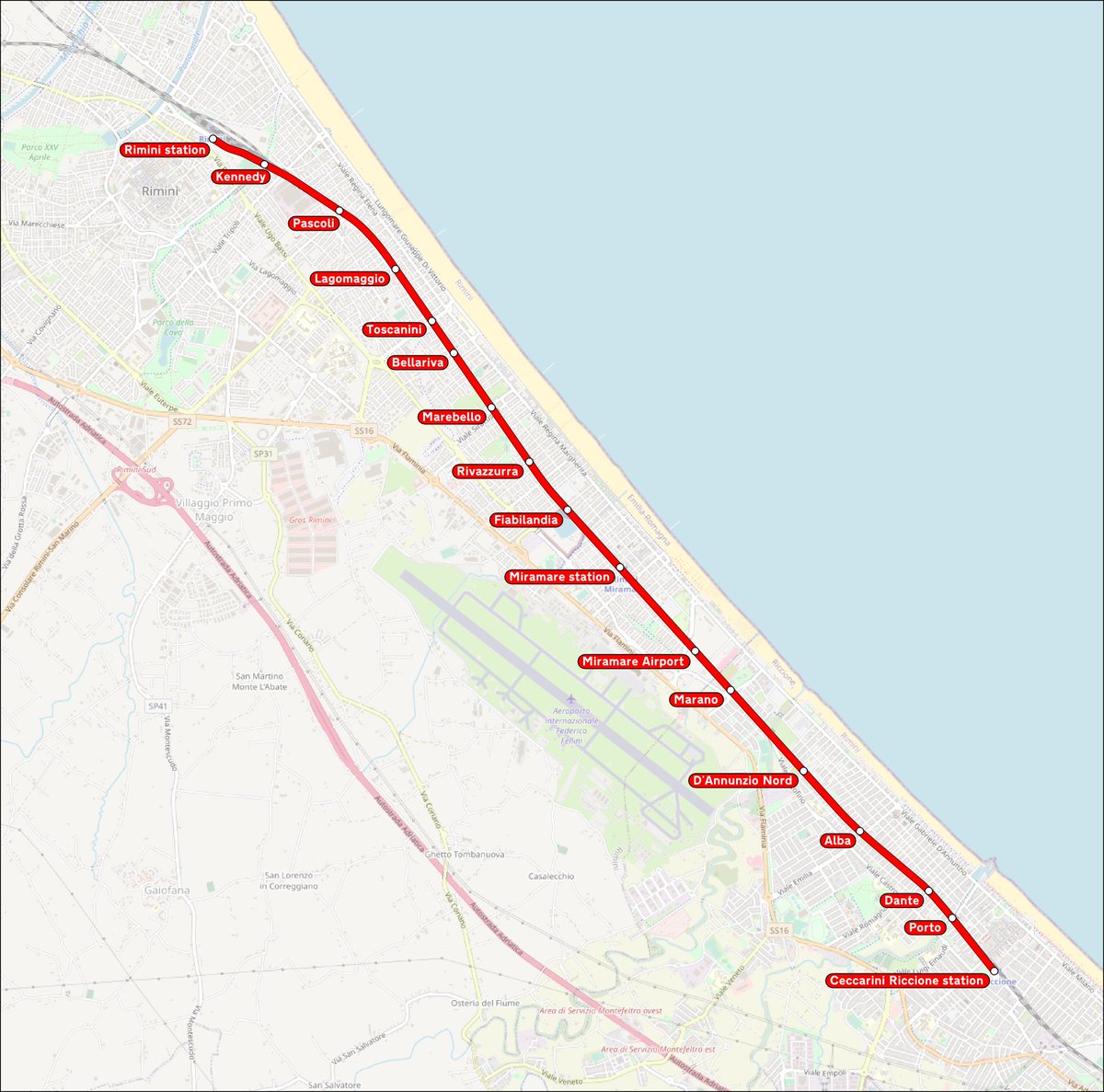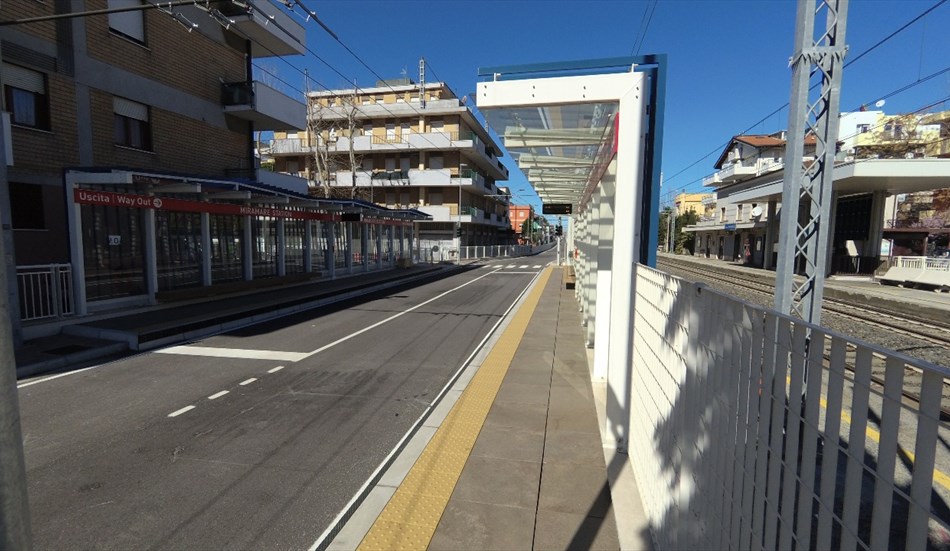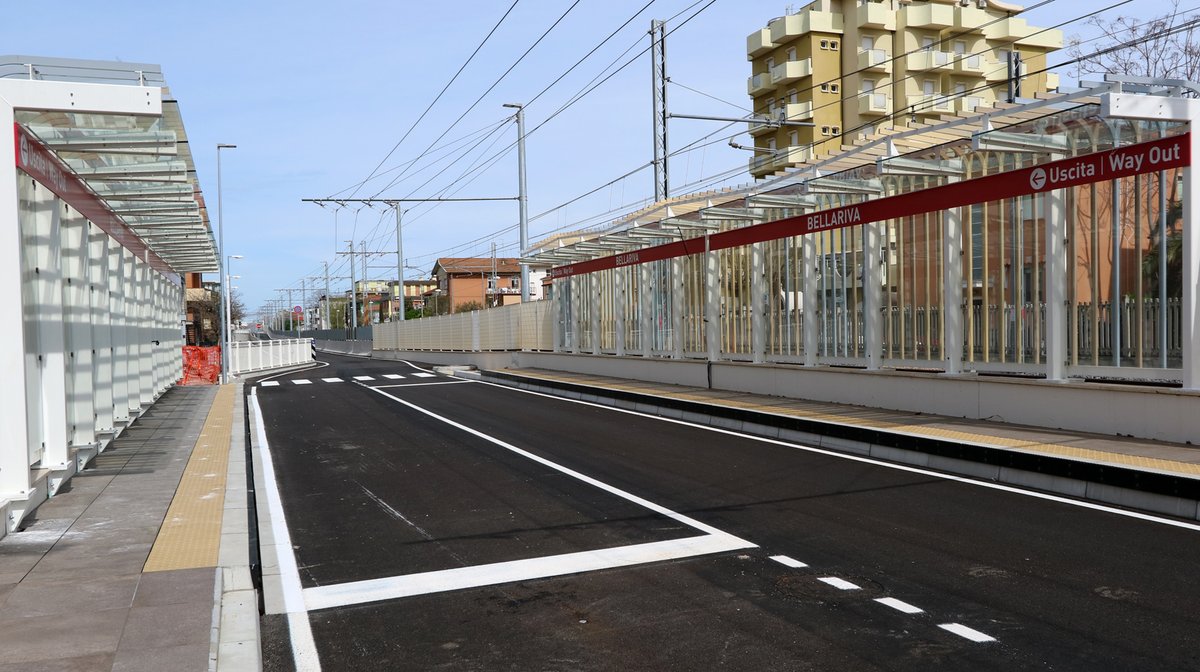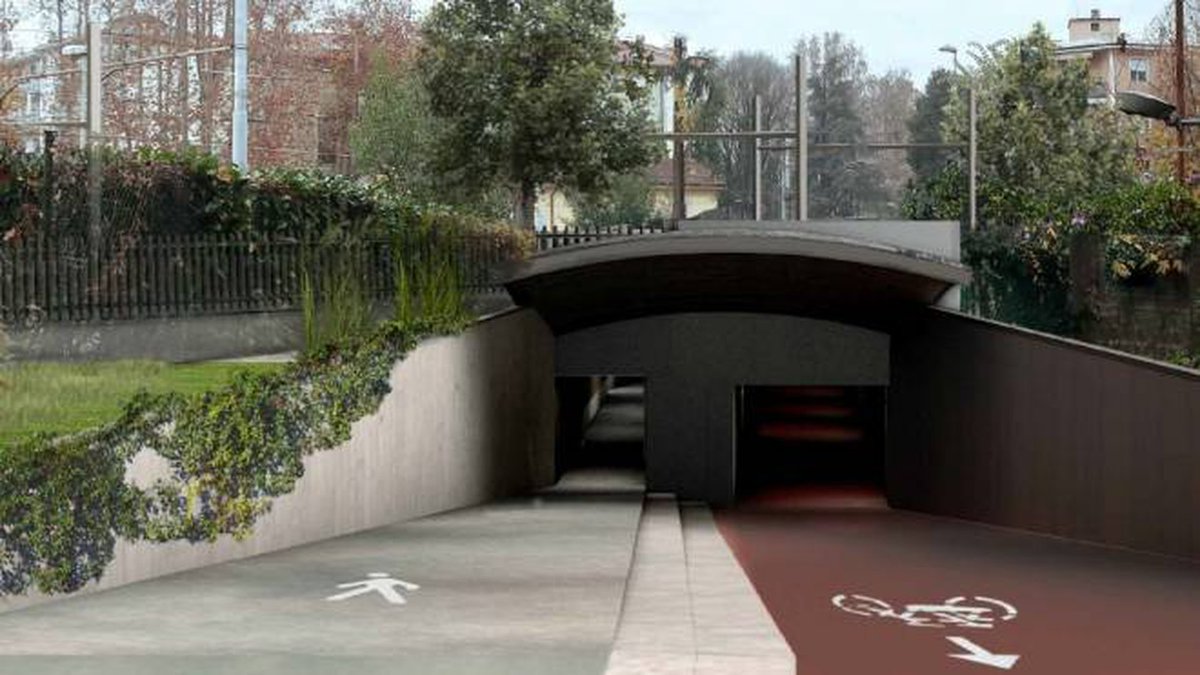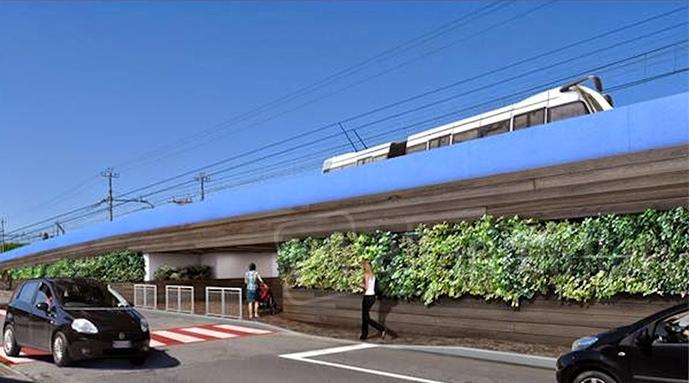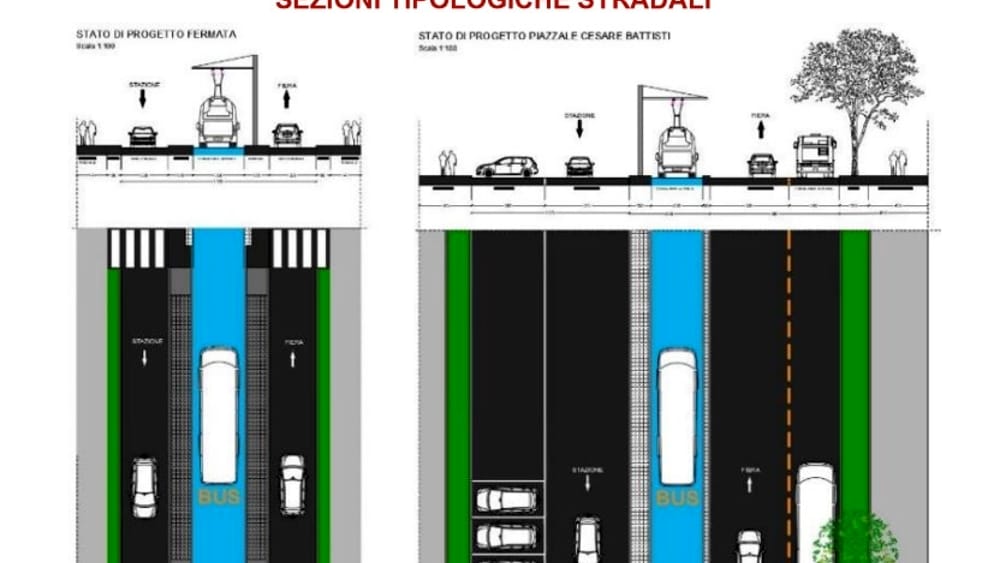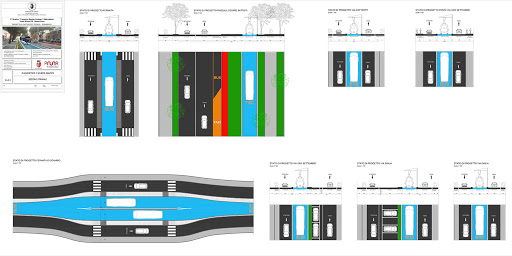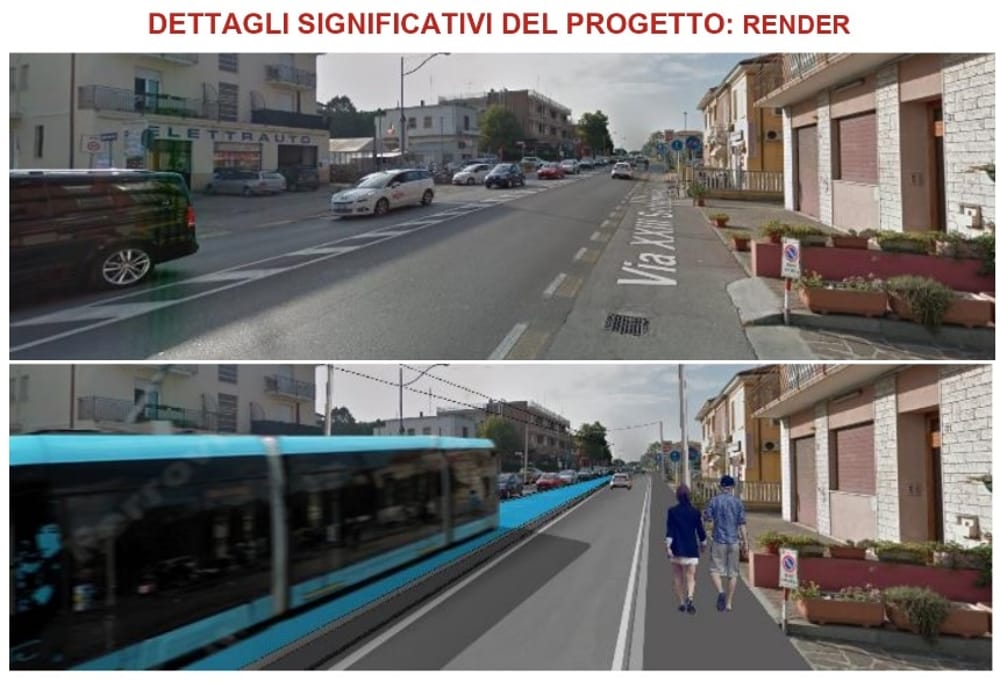1/ I keep asking myself why, despite a lot of talking about electric mobility, there aren& #39;t more new trolleybus lines around. But there are a few.
The recently opened Rimini& #39;s BRT, or better TRT (Trolleybus Rapid Transit) is an interesting experiment in intermediary systems
The recently opened Rimini& #39;s BRT, or better TRT (Trolleybus Rapid Transit) is an interesting experiment in intermediary systems
2/ The city of Rimini (151k inh. and birthplace of Federico Fellini) is the center of a linear urban area of some 350k, that developed along the coastline. It emerged as a major seaside destination during the 1950-60s economic boom. Population can soar to 1M during summer months.
3/ The city already has a 12.2 km mixed traffic trolleybus line, opened in 1939 and connecting Rimini railway station to Riccione, along a boulevard lined with hotels and resorts, very close to the beach. But commercial speed is low and inner areas are poorly served.
4/ The idea of a rapid line along a more inner route as been floated for years, but became more concrete only at the end of the 1990s, when it was financed through the very unfortunate and short lived 211/92 mass transit fund. Construction started only in 2013 though.
5/ The line parallels the Adriatic mainline rail, some 100-300 m inland from the existing trolleybus line. It uses a narrow dedicated corridor between the buildings and the rail, so it& #39;s partly single-tracked with passing loops at stations and an LRT-like signaling system
6/ The line currently in operation is 9.6 km long, has 17 stops and a 24& #39; journey time, so it can provide the 7.5& #39; designed rush hour headway with a fleet of 8+1, 18m-long VanHool ExquiCity, that are not yet in service, pending technical approval
It costed 92M€, i.e. 9.7M€/km
It costed 92M€, i.e. 9.7M€/km
7/ Albeit a forecasted ridership goal of 10-15k/day for the initial segment, the lower starting frequency at 20& #39; (pending technical approval for the ExquiCity fleet) resulted in lower ridership at 5k, but with peaks of 15-20k during major events. Then Covid-19 happened.
8/ An interesting feature linked to the project is the realization/upgrade of many pedestrian and cycle connections under the rail, since ever a major barrier in the middle of the city.
Station design is plain but pleasant, with level boarding and easy connection to the rail
Station design is plain but pleasant, with level boarding and easy connection to the rail
9/ The line is probably going to be extended at both ends to the Exposition Ground, Riccione& #39;s SPA and congress center, and, tentatively, also a spur to the airport, whose future is still uncertain though.
10/ Rimini& #39;s TRT is an interesting experiment of a low-cost medium capacity electric transit, the even cheaper trolleybus version of Valenciennes& #39;s tramway line 2: light but dedicated infrastructure, single track and passing loops to fit better in a constrained environment.
11/ The real success of the infrastructure is yet to be proven and depends from many factors., The current situation is not very favorable, even if the VanHool trolleybus will finally be put online in the coming months, hopefully.
12/ Maybe there are some lessons to learn on that side of the pond too, as we struggle to provide decent, frequent and reliable transit options in medium-to-low demand corridors (10-15k/day), while we fantasizes about transit electrification relying on yet to come technologies.
13/ The humble trolleybus is out there since the 1930s. BRTs can easily become TRTs at reasonable costs and, with some "smart design" adapted to local constraints, we can get a "light" segregated transit along narrow RoWs, cheaper, faster and more frequent than most US streetcars

 Read on Twitter
Read on Twitter